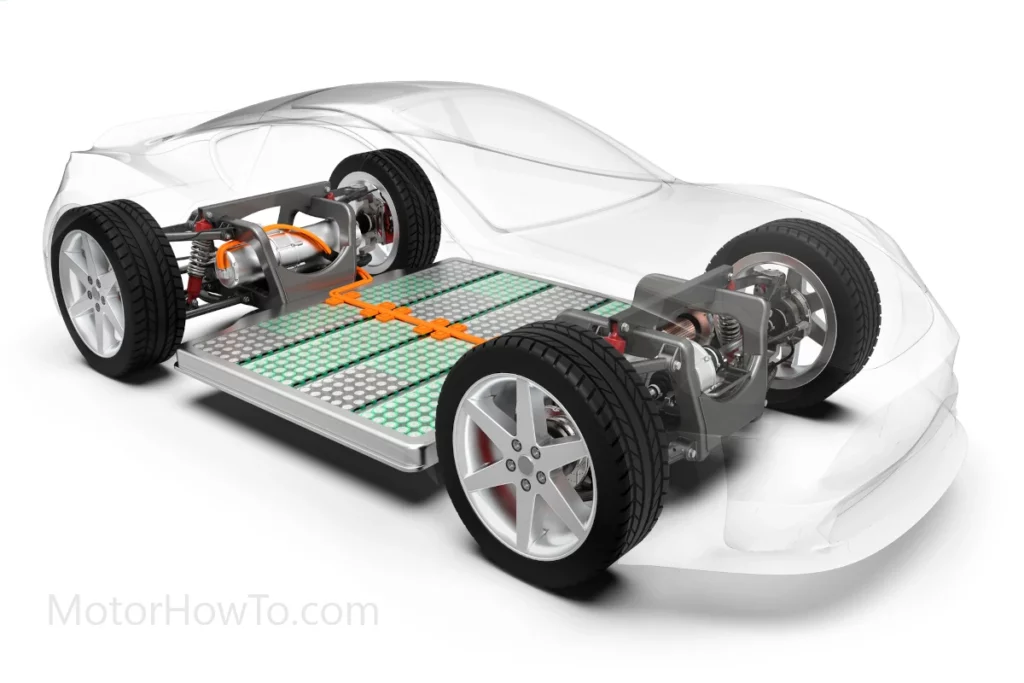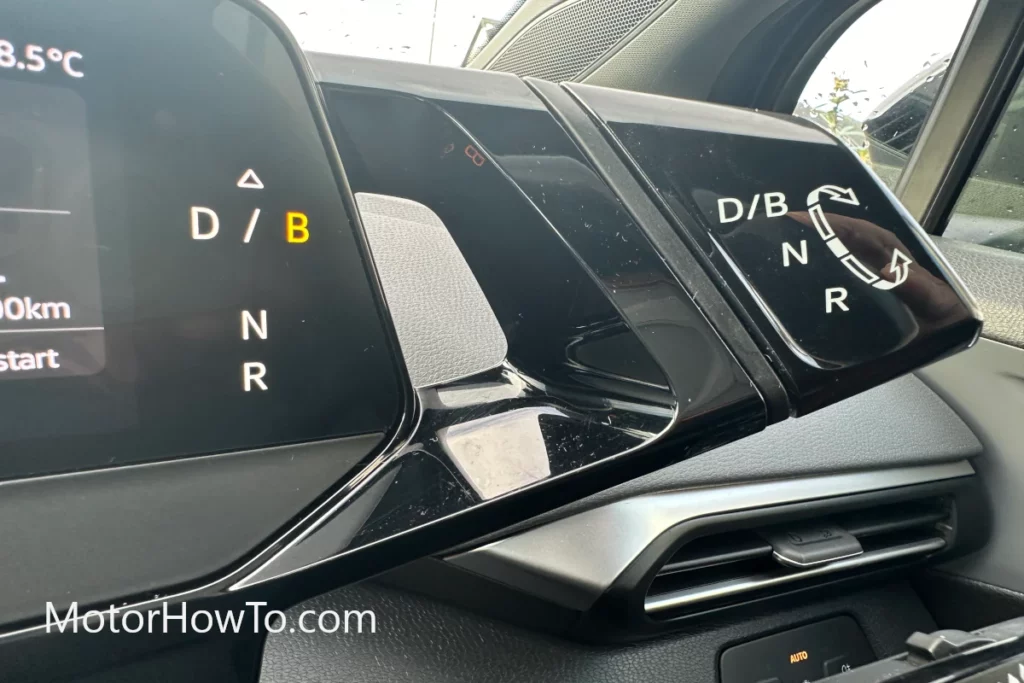Regenerative braking or regen has become an increasingly popular feature in modern electric vehicles (EVs), allowing drivers to recharge their batteries while decelerating.
However, not all drivers are taking advantage of this technology. Some choose to turn off regenerative braking completely. Why?
Drivers may turn off regenerative braking due to personal driving preferences, feeling that it impacts the driving experience or braking performance.

Regenerative braking captures the energy created when a vehicle slows down and uses it to recharge the battery.
This can significantly extend the range of an electric car and reduce overall energy consumption.
However, some drivers find that regenerative braking does not match their driving style and prefer to turn it off.
They may find that it makes the driving experience less natural or interferes with their braking performance.
This article will investigate these concerns and consider whether turning off regenerative braking is the right choice for all drivers.
Related:
- How To Turn Off Regenerative Braking? (Explained For Beginners)
- Why Turn Off Regenerative Braking? (Read First)
- Why Does Regenerative Braking Sometimes Become Unavailable? (Solved)
When to Turn Off Regenerative Braking
There are certain driving conditions where regenerative braking may not be as effective, and turning it off may be necessary.
For example, regenerative braking can reduce the vehicle’s speed too quickly when driving downhill, causing friction brakes to be used more frequently.
Similarly, in low-speed stop-and-go traffic, regenerative braking may not be able to provide enough deceleration, leading to increased use of friction brakes.
Additionally, it may be beneficial to turn off regenerative braking in certain scenarios where maximum brake performance is needed, such as in emergency braking situations. Traditional friction brakes provide more immediate and forceful stopping power in these scenarios.
Turning off regenerative braking can also prolong the lifespan of the vehicle’s friction brakes, as relying solely on regenerative braking can cause them to wear out more quickly.
1. Driving conditions that may decrease the effectiveness
Several driving conditions can decrease the effectiveness of regenerative braking, including:
Driving downhill
The vehicle’s speed can increase rapidly, making regenerative braking less effective.
Low-speed stop-and-go traffic
In low-speed stop-and-go traffic, regenerative braking may not provide enough deceleration, leading to increased use of friction brakes.
Emergency braking
In emergency braking situations, the traditional friction brakes provide more immediate and forceful stopping power.
Wet roads or poor traction
Wet roads or poor traction can reduce the effectiveness of regenerative braking by reducing the contact between the road and the tires.
High speeds
At high speeds, regenerative braking is less effective as the vehicle’s kinetic energy is much higher.
It is important to note that the specific driving conditions that may decrease the effectiveness of regenerative braking will vary depending on the vehicle and its components.
2. Long-term impact on brakes and battery life
Using regenerative braking exclusively can have a long-term impact on the vehicle’s brakes and battery life.
Regarding the brakes, relying solely on regenerative braking can cause the friction brakes to wear out more quickly, as you may use them less often. This can result in reduced braking performance and potential brake failure over time.
In terms of the battery, over-reliance on regenerative braking can result in an increased charge cycle for the battery, which can hurt its overall lifespan.
Additionally, frequent use of regenerative braking in high-stress driving scenarios, such as emergency braking, can significantly strain the battery, potentially reducing its capacity over time.
Steps and Techniques for Turning Off Regenerative Braking

The process of turning off regenerative braking will vary depending on the make and model of the vehicle. Before turning off regenerative braking, consult the owner’s manual for the car.
This manual will provide detailed instructions on how to turn off regenerative braking and include important safety information.
Some electric vehicles have a button or toggle switch that can disable regenerative braking.
This switch may be located on the dashboard, steering wheel, or center console. You may require access to the vehicle’s software settings to turn off regenerative braking.
If the driver needs help performing this task, they should consult a qualified mechanic or technician.
Pros and Cons of Turning Off Regenerative Braking
Regenerative braking is a technology that allows electric vehicles (EVs) to recharge their batteries by converting the energy generated during braking into electricity. Turning off regenerative braking may have some benefits and drawbacks.
| Pros of Turning Off Regenerative Braking | Cons of Turning Off Regenerative Braking |
|---|---|
| Improved Brake Feel: The regenerative braking system can feel unnatural or unresponsive for some drivers. Turning it off can result in a more traditional brake feel that some drivers may prefer | Decreased Energy Efficiency: Regenerative braking is a key aspect of energy efficiency in electric vehicles. Turning it off reduces the amount of energy that can be recovered and stored in the battery, negatively impacting the vehicle’s overall efficiency |
| Easier to control the vehicle’s speed: Without regenerative braking, it can be easier to control the speed of the vehicle when driving down a hill, for example | Increased Brake Wear: Without regenerative braking, the brake pads will be used more frequently, resulting in increased brake wear and the need for more frequent brake maintenance |
| Battery Isolated: When regenerative braking is turned off, the energy generated during braking is lost as heat instead of being stored back in the battery. This means the battery is not engaged during braking and reduces the number of charge/discharge cycles | Battery Engaged: The energy generated during braking will be onerous on the battery as regen increase the number of charge/discharge cycles. Turning off regenerative braking may result in more rapid degradation of the battery, which can shorten its lifespan |
Should you use regenerative braking all the time?
Regenerative braking in electric vehicles (EVs) turns the electric motor into a generator, which transforms the vehicle’s kinetic energy into electrical energy when the brakes are applied. This energy is then stored in the vehicle’s battery, potentially increasing range.
While it is a good idea to use regenerative braking all the time, it is unnecessary.
Using traditional friction brakes occasionally can help prolong their lifespan. Additionally, regenerative braking can be less effective in certain driving scenarios, such as going downhill or in low-speed stop-and-go traffic.
It is important to note that regenerative braking will vary depending on the driving conditions and the specific electric vehicle being used. Ultimately, the decision to use regenerative braking comes down to personal preference and driving style.
Some drivers may prefer the smoother and more efficient braking experience offered by regenerative braking, while others may prefer the more traditional feel of friction brakes.
Conclusion
In conclusion, regenerative braking is a technology that is becoming increasingly popular in modern electric vehicles (EVs).
It allows drivers to recharge their batteries while decelerating and helps to extend the range of the vehicle and reduce overall energy consumption.
However, not all drivers take advantage of this technology, with some choosing to turn it off due to personal driving preferences or concerns over the impact on the driving experience or braking performance.
There are specific driving conditions that can decrease the effectiveness of regenerative brakings, such as driving downhill, low-speed stop-and-go traffic, emergency braking, wet roads, poor traction, and high speeds.
The process of turning off regenerative braking will vary depending on the make and model of the vehicle, and the driver should consult the owner’s manual for instructions.
Turning off regenerative braking may have benefits, such as increased driving range and improved brake feel, but it can also have drawbacks, such as decreased energy efficiency and increased brake wear.
Ultimately, the decision to use regenerative braking will depend on the specific driving conditions, personal driving preferences, and the vehicle’s make and model.
Sources
Can You Turn Off Tesla Regenerative Braking?
How to Turn Off Regenerative Braking on a Tesla?



